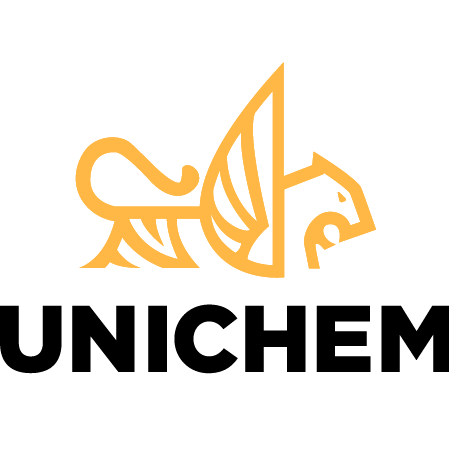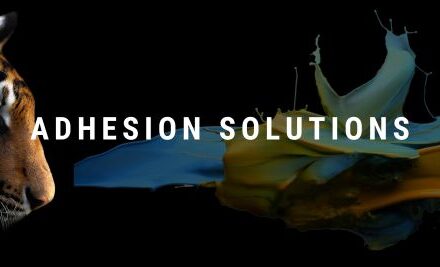
Achieving successful adhesion of coatings or adhesives to difficult substrates such as vinyl, aluminum, brass, stainless steel, and thermoplastic olefins, can be fraught with challenges. It is important to work with an experienced coating and adhesive manufacturer that understands the key elements of successful adhesion and how to troubleshoot adhesion failures to provide solutions.
Adhesion and Cohesion
One of the most essential properties in the paints, coatings, and adhesives industry is adhesion, which refers to a strong and reliable bond between the coating and the substrate. Proper adhesion ensures that the coating, paint, or adhesive remains adhered to the surface even when bonding to difficult substrates or exposed to aggressive conditions. The nature of the adhesion is directly related to the quality and durability of a coating and adhesive.
Paints, coatings, and adhesives must adhere strongly with a reliable bond to the substrate long after curing is complete. The strength of the bond between the coating and the substrate is dependent on two specific properties of a material which include adhesion and cohesion.
- Adhesion is the strength of the bond between the adhesive and the substrate.
- Cohesion is the strength of a bond between adhesive particles.
Key Elements Affecting Adhesion of Coatings to a Substrate
Curing can play a key role in adhesion, and factors such as pressure and shrinkage can impact film formation. Other key elements which affect the adhesion of coatings and adhesives to a substrate include the:
- Composition of the coatings and adhesives
- Interface between the substrate and the coating
- Film formation where the interface must be as strong as possible
Theories of Adhesion
There are several theories that explain the mechanism of which adhesion occurs:
- Adsorption Theory – this is the force of attraction between the surface and interface molecules
- Chemisorption Theory – further extends adsorption theory where adhesion occurs due to chemical bonds formed across the interface
- Diffusion theory – refers to the adhesion of polymeric materials that inter-penetrate chains at the interface
- Electrostatic theory – refers to the transferring of electrons from one surface to another, which exerts a force of attraction by building up dissimilar charges
- Mechanical interlocking – occurs when molecules interlock around irregularities on the surface of the substrate
Not one single theory can fully explain adhesion in a comprehensive or general way. Some theories apply to specific applications or substrates, while other theories may differ according to varying circumstances.
Adhesion Failure of Coatings
Coatings can protect surfaces when the adhesion is strong, such as when used to protect surfaces against corrosion. Prolonged exposure to harsh external elements, however, such as UV exposure, humidity, and water or saltwater, can adversely affect the adhesion of a coating, along with other potential causes of failure, which include:
- External exposure
- Choosing the wrong coating for the surface
- Incompatibility of the coating with the surface
- Inadequate surface preparation
These are all potential causes of adhesion failure in coatings.
The two main types of failure in adhesion bonds between coatings and substrates are adhesive failure and cohesive failure.
- Adhesive failure – failure at the interface between the adhesive and the substrate
- Cohesive failure – failure within the adhesive itself
Adhesive Failure Causes
- Adhesive failure – failure of adhesion at the interface
- Interfacial – failure at the interface due to a specific cause such as hydrolysis
- Near interface failure – occurs when the adhesive and the adherend locally affect each other
Cohesive Failure Causes
- Cohesive failure – a failure within the adhesive itself
- Substrate failure – a failure within the substrate
- Dissipative failure – a failure occurring after excessive absorption of energy within the adhesive system
Weak-Boundary-Layer Theory
The weak-boundary-layer theory refers to a cohesive failure, a rupture at a weak boundary layer, that is the main reason for bonding failure at the interface. Coating defects are typically due to a cohesive failure of a weak boundary layer. Weak boundaries can originate either from the coating, the adherend, the environment, or any combination of these three causes. If any type of impurity is concentrated along the bonding surface, a weak attachment to the substrate conform and cause weak boundary layers on the coating.
External contamination is one cause of weak boundary layers; other causes include oxide layers or corrosion on metal surfaces and release agents such as plasticizers on polymeric surfaces or other low molecular weight constituents.
It is important to remove any weak boundary layers through chemical or physical methods to prevent any type of weak link in the film formation that could cause premature adhesion failure of the coating.
Factors That Influence Adhesion
There are many factors that influence adhesion and cause adhesion failure between the coating and the substrate, such as:
- Substrate surface profile – a smooth surface may not allow coatings to adhere well without surface preparation.
- Poor surface preparation – proper cleaning to completely remove all soils is necessary to allow successful bonding to the surface. Other surfaces may require additional pretreatments, such as heat treatment or electrolysis.
- Inappropriate wetting – if the coating is inappropriately wetted on the surface, the surface bond and proper adhesion can be affected.
- Insufficient curing or cross-linking – over-curing can lead to poor adhesion
- Exposure to environmental factors – UV exposure, humidity, and water can also influence adhesion.
Any of these factors can influence adhesion and cause common surface defects, which may include:
- Flaking – the coating becomes separated from the substrate.
- Peeling – incompatibility of coatings or contamination causes a reduction in bond strength
- Undercutting – due to a buildup of corrosion under the coating
- Blistering – dome-shaped defects occur when water-soluble materials are in or under the coating and can be caused by incorrect curing or chemical exposure.
Methods to Improve Adhesion
There are a few predominating factors that have an important effect on the quality of adhesion; these include:
- Substrate surface treatment
- Wetting of the surface
- The structure of the materials being bonded
Following good practices with these factors can help to improve adhesion. Additionally, various additives can impact the mechanical and physical properties, which can either worsen or improve coating adhesion. These additives include:
- Plasticizers – can be used to soften binders in coatings which increases flexibility. This enhances resistance to impact force and can help to minimize adhesion failure.
- Pigments and extenders – used to provide physical properties such as water resistance and hardness.
- Solvents – reduces binder viscosity and increases coating drying time, helping to minimize blistering and prevent adhesion failure.
- Adhesion promoters – help to improve adhesion and form a strong and permanent bond.
- Wetting agents – special wetting agents help to overcome differences in surface tension and improve adhesion.
Testing Methods for Adhesion Evaluation
There are various methods that can be used to evaluate how well a coating adheres to a substrate with good performance. It is important to consider if any bonding failure is due to adhesive failure or cohesive failure when implementing any adhesion test evaluation method.
The primary methods used to test coating adhesion include:
- Scrape test – ASTM D2197 – Standard Test Method for Adhesion of Organic Coatings by Scrape Adhesion. This test determines the adhesion of organic coatings when applied to flat, smooth surfaces.
- Cross-cut test – ASTM D3559 – Standard Test Methods for Rating Adhesion by Tape Test. This test method addresses procedures to assess the adhesion of coatings to metallic substrates with the use of pressure-sensitive tape.
- Pull-off test – ASTM D4541 – Standard Test Method for Pull-Off Strength of Coatings Using Portable Adhesion Testers. This adhesion test method addresses the procedures to evaluate the adhesion, or pull-off strength, of coatings on rigid substrates such as wood, concrete, or metal.
Partnering with an experienced and reputable chemical coatings and adhesives manufacturer can help you to achieve successful adhesion over various applications.
Coatings and Adhesives Supplier with Custom Solutions
Universal Chemicals & Coatings, Inc., UNICHEM, is a custom chemical, coatings, and adhesives manufacturer with more than 50 years of experience. We offer uniBOND industrial adhesives formulated for superior adhesion to various substrates such as fiber composites, polypropylene, polyethylene, rubber, vinyl, and more. Our resin and adhesion experts offer deep technical knowledge and vast market expertise across various industries and applications.
UNICHEM is a leading chemical coating and adhesive supplier, offering high-performance industrial adhesives for use in many market applications. We support coil coating lines with coatings and adhesives designed specifically for coil coating with varying curing temperatures and custom formulations available. Contact us for solutions with adhesion to difficult substrates or to learn how to improve adhesion in your process.


